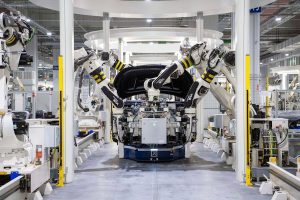Robotics Trends in 2020

The robotics industry is making the impossible possible. The technology we only see in science fiction movies is gradually becoming part of our daily lives. Right now, there is no slowing down because robots are now everywhere.
We have robots for simple tasks like making coffee, for recreational activities (drones) and robots designed for critical surgery.
We also have them in wearables form- hands, legs, and arms. Robots also come as medical devices. Some are even modeled to mimic bees (biomorphic drones).
As the year 2019 draws its curtains, we look at departments and sectors that will experience a boom in the utilization of Robotics.
ROBOTS IN OFFICES
Since robots or collaborative robots were introduced into the workspace in 2010, it has revolutionized working structure. For production companies, robots have helped diversify the workforce and increase productivity.
Creating a symbiotic relationship between robots and humans will streamline the workflow. The goal for the year 2020 is to introduce more robots to the workforce, ease of access for the companies, and at an affordable price, which in turn leads to more distribution and usage.
Studies have shown that robots can reduce human effort during production by 60 percent. Given that the prevalent skill gap is costing companies the UK over £7 billion annually, the introduction of robots can impact the economy positively.
ROBOTS IN MEDICINE
Over the years, Bio-tech industries have spent millions of dollars researching methods to make non-invasive and minimally invasive surgery quicker, easier, and safer.
A breakthrough has been the utilization of robots. Hence, the birth of surgical robots. Consequently, the demand for surgical robots has skyrocketed.
The introduction of more accurate diagnostic methods for non-invasive and minimally invasive operations has led to an outcry for a more effective surgical procedure. The existing surgical procedure puts an incredible level of strain on the hospital and surgeons.
Robots have become a credible panacea to this problem confronting the health system.
It becomes imperative that robots must be precise and unfailing to make sure that they can reduce pressure on the medical system. For instance, endoscopy- a minimally invasive operation that lets surgeons examine the body (inside) of a patient, is a surgical procedure that robots play a vital role during the process.
It is crucial that robots used during Endoscopic operations compact and precise. This is why the French company EndoControl used a FAULHABER brushless DC-motors when manufacturing its new endoscopy robot- ViKY system. This component helps the robot attain the necessary accuracy and steadiness.
The motors come with a variety of reduction ratios ranging from 3:1 to 1500:1. This makes it easier to adjust the speed and torque of the gadget. The ViKY systems have about 700mNm of accurate movement thanks to the utilization of FAULHABER drive systems.
This type of development is needed to ensure hospitals can withstand the ever-increasing rate of surgeries, decreasing fatigue, and burn out among surgeons.
ROBOTS IN AGRICULTURE
A market study conducted shows the need for robots in agriculture will increase by 25% in 2025. It is no surprise that there is an upsurge in the creation of robotic software and hardware for agricultural applications. A notable example is biomorphic drones designed to mimic the behavioral patterns of bees. Its capabilities were well proven at UK-RAS
Robots and drones are currently the best things that have happened to agriculture. The effect has been mostly positive. Drones are used to observe and analyze crops. We now have automated tractors that can handle most agricultural practices ranging from seedling, application of fertilizer, and harvesting.
This bodes well for human labor as it could be devoted to more complex and productive tasks.
Some farming communities in China are using industrial drones to water yields in locations that are hard to reach. This system has proven to be effective. It saves fuel used to transport workers. The best part, the drones don’t waste resources.
The approach is more fuel-efficient than transporting workers, and the computer-controlled sprayers waste fewer resources.
Whatever the sector robots are applied, they are proving to be reliable and cost-effective. 2020 is not here yet, but robotics is already making it a productive one.






